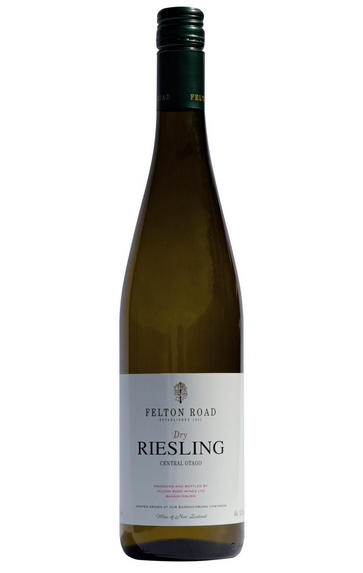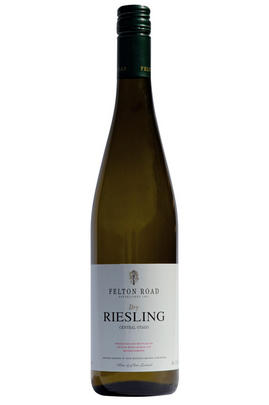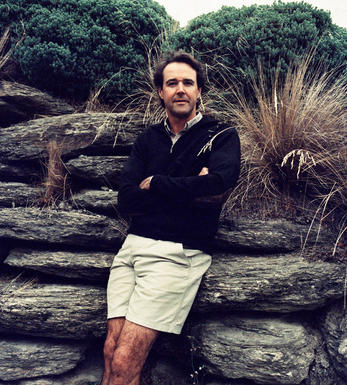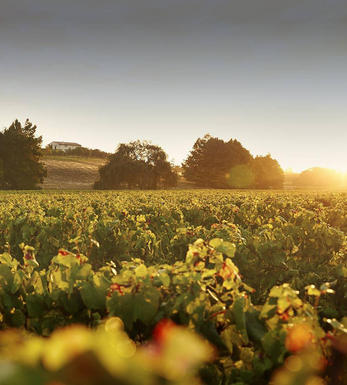
2015 Felton Road, Dry Riesling, Central Otago, New Zealand

Critics reviews
Lisa Perrotti-Brown - 31/12/2015
About this WINE

Felton Road
The Felton Road winery in New Zealand's Central Otago was bought by Nigel Greening, a self-described Pinot Noir "addict" from England, in 2000 and has been farmed organically & biodynamically since then.
Their grapes are entirely grown in their own 'Elms Bannockburn Vineyard' which has a northerly exposure to help maximise ripeness.
Felton Road's winemaker Blair Walter's experience in Oregon and Burgundy has stood him in good stead for coaxing the best out of the property's vines. He adopts a 'hands off' approach in the unique three-level winery, which is built into the hillside, with the aim of producing wines of elegance, complexity and exceptional depth of fruit.
The result is that Felton Road produces a rare beast - A suberb Pinot Noir wine, one of the best examples from outside Burgundy, plus an equally great Chardonnay.

Central Otago
Central Otago is the most southerly wine region in the world and is responsible for five-point-five percent of a href=/region-3-new-zealand>New Zealand's vines (1,253 hectares in 2006). Central Otago was first identified as a site of serious Pinot potential in 1895 by Italian viticulturalist Romeo Bragato, drafted in by the government to treat the Phylloxera louse, subsequently recommending grafted rootstocks as a remedy in 1901. It had been thought to be worth even more during the Gold Rush days of the 1860s, before being turned over to merino sheep and later fruit orchards until the 1970s. In 1976, Gibbston Valley's alluvial gravel soils were the first to be planted in the area.
It's a measure of the success of the Central Otago ‘brand’, and the appeal of its full-bodied Pinot Noirs, that the region has experienced a 350 percent increase in the vines planted there, and a 125 percent increase in the number of new wineries over the same period (up to 89, or 16 percent of the country's total); as per b>Marlborough's relationship with a href=/grape-sb-sauvignon-blanc>Sauvignon Blanc, b>Pinot Noir now represents approximately 75 percent of the Central Otago vineyards. That the region's capital, Queenstown, annually plays host to the country's Pinot Noir forum is further proof of the region's significance. More controversially, the recent rush to secure vineyards within this now fashionable viticultural zone has led to a rash of criticism over the quality of some of the newcomers.
Located at the foot of South Island, the region may be on the 45th parallel south, but its site among the Bannockburn Hills of the Southern Alps (at approximately 200 metres above sea level) ensures a continental climate, if one dogged by frosts and marked by significant swings in temperature (up to 40 degrees Celsius at times). Soil profiles vary between the deep silt loams of the Bannockburn sub-region, while the wider Cromwell Basin displays both sandy loam over calcium deposits as well as alluvial loess over schist. Vinification typically involves French-oak barrel ageing of between 10 to 18 months.
Stylistically, the Gibbston Valley wines (such as those of Peregrine Wines) show a sweet, soft red raspberry and strawberry fruitiness, while the warmer Bannockburn/Loburn areas produce more powerful, tannic styles with black cherry and thyme notes b>Felton Road's range is a prime example. Fine Riesling is also produced amongst the schistous soils.
Recommended producers: Amisfield Estate, a href=/producer-3606-felton-road>Felton Road, Peregrine Wines, Ostler Vineyard.

Riesling
Riesling's twin peaks are its intense perfume and its piercing crisp acidity which it manages to retain even at high ripeness levels.
In Germany, Riesling constitutes around 20% of total plantings, yet it is responsible for all its greatest wines. It is planted widely on well-drained, south-facing slate-rich slopes, with the greatest wines coming from the best slopes in the best villages. It produces delicate, racy, nervy and stylish wines that cover a wide spectrum of flavours from steely and bone dry with beautifully scented fruits of apples,apricots, and sometimes peaches, through to the exotically sweet flavours of the great sweet wines.
It is also an important variety in Alsace where it produces slightly earthier, weightier and fuller wines than in Germany. The dry Rieslings can be austere and steely with hints of honey while the Vendages Tardives and Sélection de Grains Nobles are some of the greatest sweet wines in the world.
It is thanks to the New World that Riesling is enjoying a marked renaissance. In Australia the grape has developed a formidable reputation, delivering lime-sherbet fireworks amid the continental climate of Clare Valley an hour's drive north of Adelaide, while Barossa's Eden Valley is cooler still, producing restrained stony lime examples from the elevated granitic landscape; Tasmania is fast becoming their third Riesling mine, combining cool temperatures with high UV levels to deliver stunning prototypes.
New Zealand shares a similar climate, with Riesling and Pinot Gris neck to neck in their bid to be the next big thing after Sauvignon Blanc; perfectly suited is the South Island's Central Otago, with its granitic soils and continental climate, and the pebbly Brightwater area near Nelson. While Australia's Rieslings tend to be full-bodied & dry, the Kiwis are more inclined to be lighter bodied, more ethereal and sometimes off-dry; Alsace plays Mosel if you like.


Buying options
Add to wishlist
Description
I love the chalk and wet slate minerally notes and restrained lemon / lime nuances of Felton Road's 2015 Dry Riesling. The palate is light-bodied with layers of tangy intensity complimented by savory yeast and mineral notes, finishing with great length and freshness.
Lisa Perrotti-Brown, The Wine Advocate (winter 2015)
wine at a glance
Delivery and quality guarantee